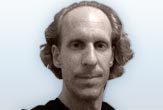Healthcare Systems: U.S. vs. Japan

Fukuoka, Japan—No one here in this island nation of 130 million has gone bankrupt as a result of medical fees. In a country notorious for $80 cantaloupes and coffin-size hotel rooms for $200, healthcare services are remarkably inexpensive.
Although I am fully insured in the United States, my family opts to opt out while in Japan, paying full price for basic health services such as dental, ophthalmology and otolaryngology. (That's right: When's the last time you've had a routine visit with an ear doctor.)
Such services cost about $20, the same price as my co-pay would have been stateside, and we don't need an appointment.
Convenient access to healthcare, with its inherent emphasis on preventative medicine, should be the hallmark of any system.
The United States lags far behind. The well-publicized issue of millions uninsured or underinsured is only part of the story. Many more with health insurance avoid doctors, disgusted by the time-consuming and often useless process.
Sicko comparisons
Every healthcare system has its shortcomings. Japan doesn't know how it will meet the demands of an aging society. Japanese doctors themselves are calling for reforms, citing fatigue and low pay among medical workers as well as more and more hospitals in the red, as detailed in a May 2008 article in the Western Journal of Emergency Medicine and elsewhere.
Get the world’s most fascinating discoveries delivered straight to your inbox.
Michael Moore's 2007 movie SiCKO, painting a rosy picture of healthcare systems around the world, misses the mark. Moore praises the French system, for example, but healthcare there is the main driver for the country's overall deficit; and citizens pay on average more than 18 percent of their income on health, albeit largely unknowingly because funds are mostly drawn through taxation, according to a 2008 whitepaper by Michael Tanner of the Cato Institute.
And despite the guaranteed inclusion of Bachman-Turner Overdrive's music on the airwaves by law, life isn't necessarily better in Canada. Waiting times for "elective" procedures such as cataract surgery and more pressing matters such as heart surgery can be long and, in some cases, deadly. Advocates quibble over the extent of the wait, not the lack of wait.
A more accurate world picture would be billions of people with no healthcare and a lucky minority, living in perhaps 50 of the world's 200-some nations, with decent access. And among these wealthier nations, the United States has a system generally worse than other imperfect systems for a large swath of its population.
Prevention
We cannot perfectly compare national healthcare systems, nor can we wholly adopt another's. Japan's system, for example, is bolstered by low levels of violence, drug addiction, obesity, and health-and-income disparity, which are all rampant in the United States.
Japan's emphasis on preventive medicine, though, is partly responsible for producing one of the healthiest populations on earth, with a life expectancy over four years greater than that of the United States. (America now ranks 50th for life expectancy, according to the CIA World Factbook.)
High-gadgetry treatment, not prevention, is the focus in the United States. This is unfortunate because many of our biggest health concerns don't need to exist: HIV, obesity, diabetes, kidney disease requiring dialysis, tooth decay, and many cancers, all "curable" through extensive prevention campaigns.
Part of this would be behavioral changes: Condoms have saved more lives than an HIV vaccine; quitting smoking is hard, but treating tobacco-induced lung cancer and heart disease is harder. Easier access to medical care is the other part: Colon cancer takes up to a decade to develop and can be stopped rather easily if only more people had routine examinations.
But we are stuck with a system in which millions of Americans have zero access to healthcare and might as well live in a developing country. Millions more are underinsured or have patchy coverage, depending on employment, resulting in inconsistent care. And millions more, fully insured, would rather not deal with frequently changing employer-based healthcare plans or wasted time in doctors' offices despite appointments.
If, as in Japan, all citizens could walk into a doctor's office when they needed it and also have continuous coverage to ensure regular check ups, our physical strength might rival our military strength. The devil, it seems, is in the details... or at least in funding priorities.
- The Real Cost of Our 'Disease Care' System
- Treating the Symptoms: What's Wrong with U.S. Health Care
- Capitalism vs. Socialism: Happiness Could Care Less
Christopher Wanjek is the author of the books "Bad Medicine" and "Food At Work." His column, Bad Medicine, appears each Tuesday on LiveScience.

Christopher Wanjek is a Live Science contributor and a health and science writer. He is the author of three science books: Spacefarers (2020), Food at Work (2005) and Bad Medicine (2003). His "Food at Work" book and project, concerning workers' health, safety and productivity, was commissioned by the U.N.'s International Labor Organization. For Live Science, Christopher covers public health, nutrition and biology, and he has written extensively for The Washington Post and Sky & Telescope among others, as well as for the NASA Goddard Space Flight Center, where he was a senior writer. Christopher holds a Master of Health degree from Harvard School of Public Health and a degree in journalism from Temple University.


